Introduction
Most people working in creative or commercial teams will agree that successful companies today need to have 1) a good product or service and 2) a strong brand. Some brands are built for the spotlight and will draw eyes just by being their true selves — but we’re not all Liquid Death, are we?
Sometimes, we need to give brands a friendly little nudge out the door — with some brand marketing. But what exactly is brand marketing? Let’s run through the essentials, its importance, and some key strategies you can use to get more eyes on your brand.
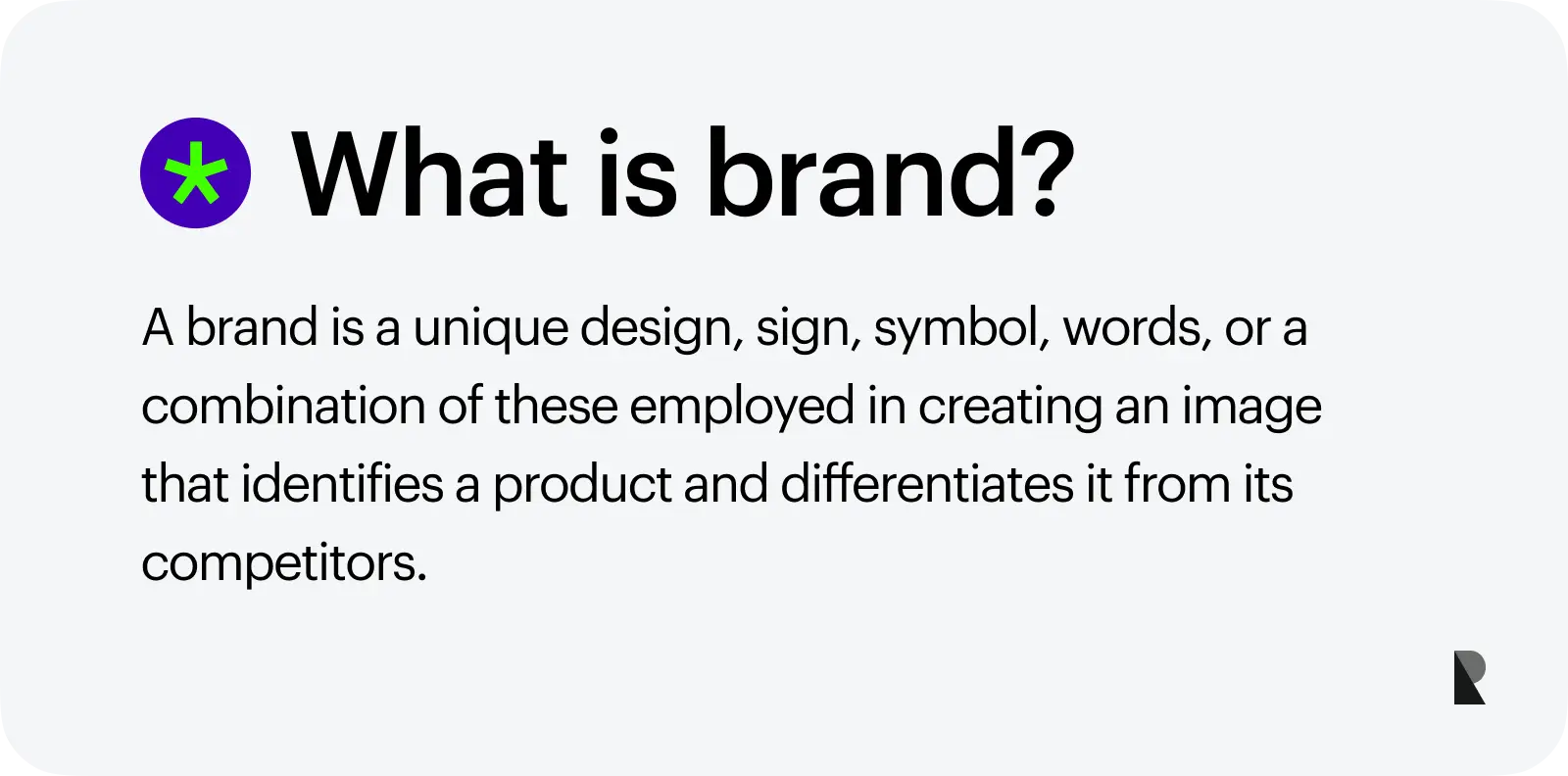
It’s even said that, if marketing is the act of asking someone on a date, branding is the reason they say yes. Brands play a massive role in differentiating a business from competitors, helping to build customer loyalty and trust. And loyalty matters here, as 75% of people prefer to buy products from brands they already know. This shows the importance of having a recognizable and trusted brand that helps positively influence people’s buying decisions.
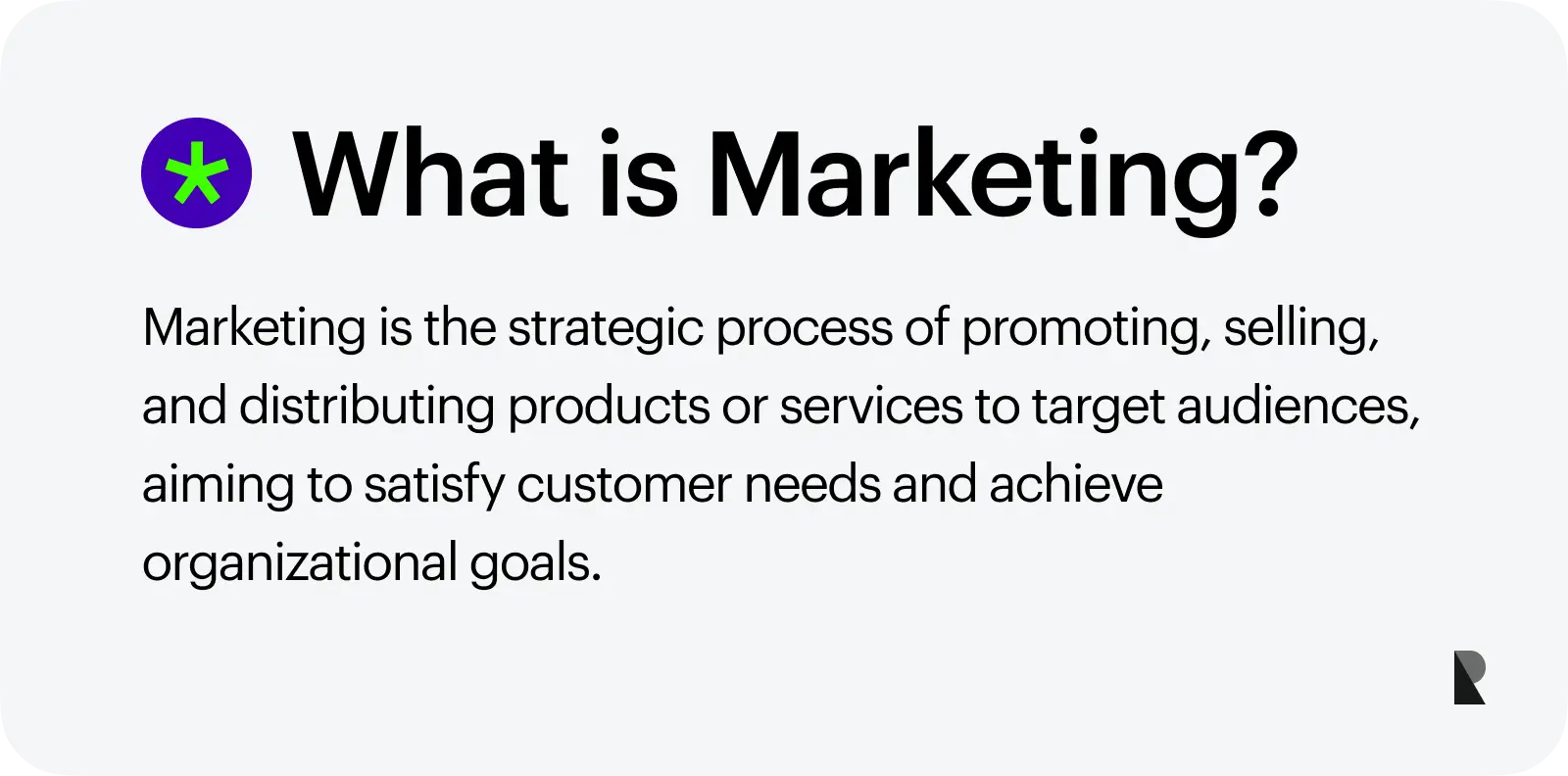
The main goal of marketing is to attract and retain customers by trying and perfecting different strategies and channels. Before diving into marketing, it’s often worth teaming up with a brand identity design firm to make sure your brand feels cohesive and ready to grow.
Marketing is the continuous process of identifying, anticipating, and satisfying customer needs. It requires doing research and understanding consumer behavior, creating products or services that meet those needs, and communicating their value well. Great marketing helps ensure that a company's offerings reach the right audience at the right time and through the right channels.
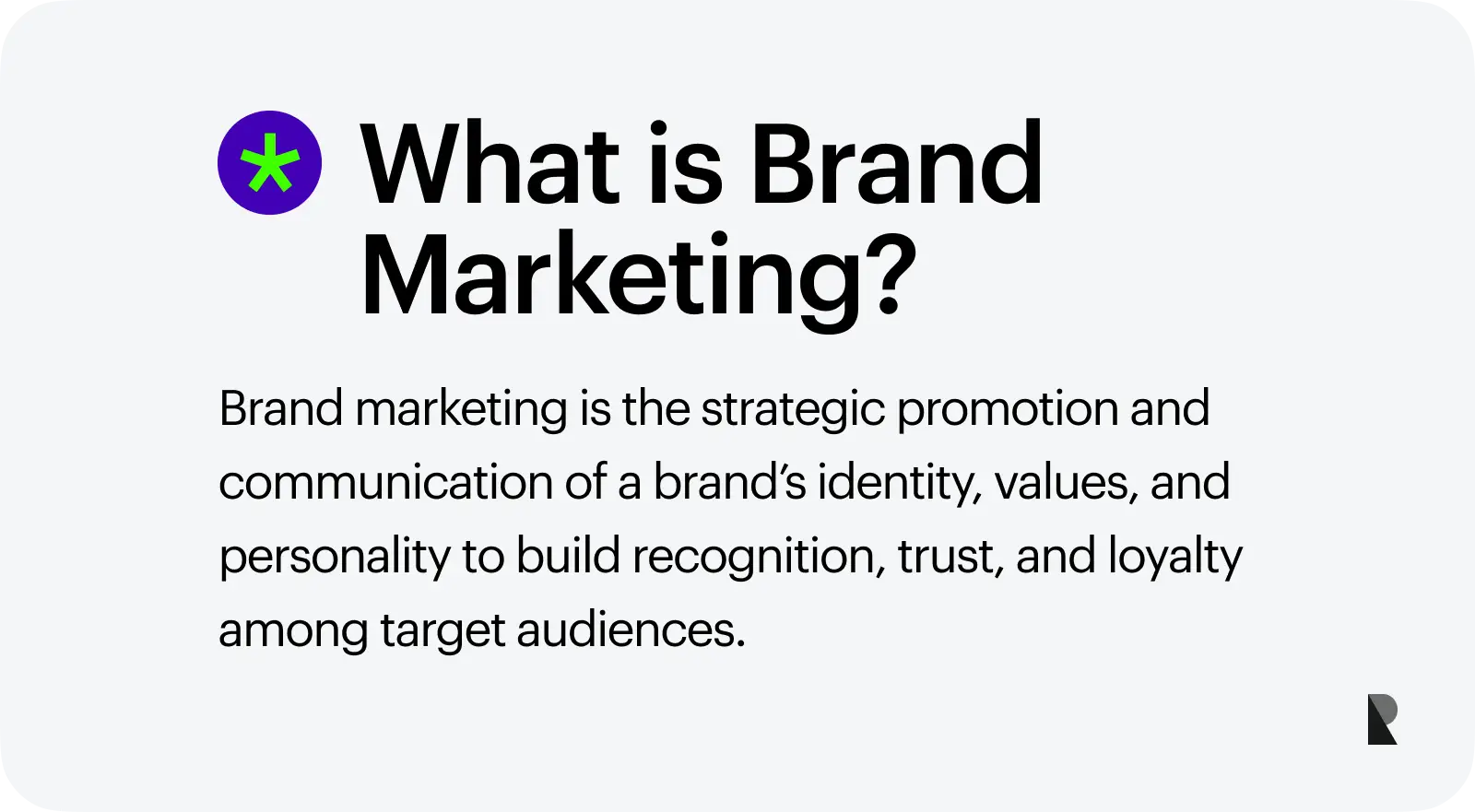
Best practice approaches combine branding and marketing principles to create a cohesive, internally agreed-upon brand image.
Brand marketing involves repeatedly communicating that brand image across all marketing efforts to foster a strong relationship with consumers through consistent messaging: brand consistency across platforms can increase revenue by up to 23% and is a natural and proven business driver. As you align marketing activities with the brand's values and mission, you’ll be able to impact your audience and differentiate yourself from competitors.
What is a Brand Marketing Strategy?
A brand marketing strategy is a detailed plan built to promote and grow a brand. It’s influenced by the brand's vision, mission, and values, which helps identify the target audience and create consistent messaging across all marketing channels.
The strategic goals differ based on the brand’s maturity, but the end goal is often to achieve long-term brand success and recognition.
Before you start marketing, you need to define your brand's vision, mission, and values, understand your target audience, create a brand identity, and know how to communicate your brand message consistently across the company. This strategy will become essential for all things marketing and align with your brand goals.
The perfect brand marketing strategy considers every aspect of the brand's communication and touchpoints and is wholly aligned with the brand's values. This helps you build a strong brand that people will recognize in a split second.
Branding vs. Marketing
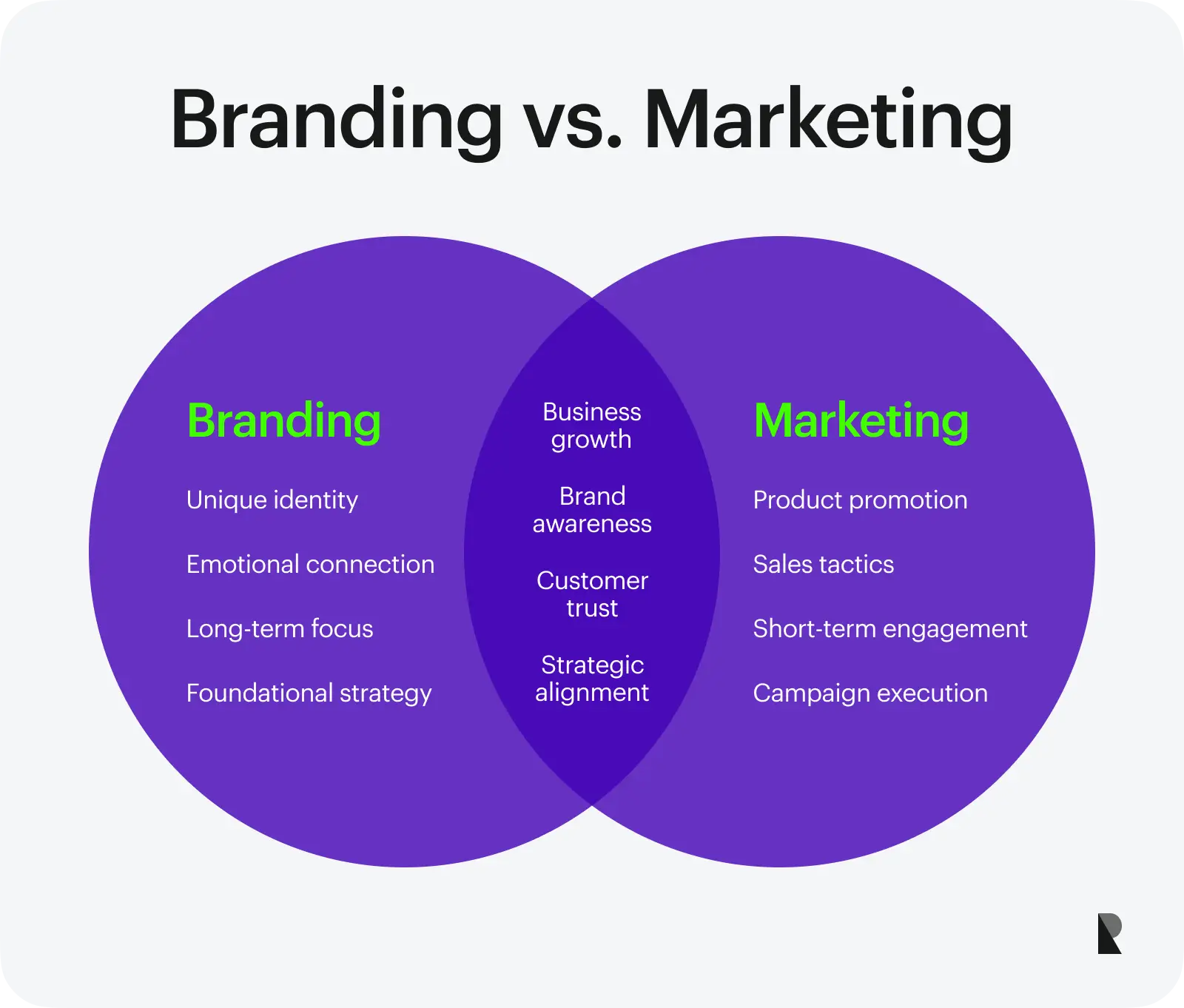
The difference between branding and marketing is crucial to understand if you, as a business, want to make a mark in your industry. Indeed, both words are often mentioned in the same sentences — they do, however, refer to very different parts of a business strategy.
As branding focuses on building a unique perception and identity for your company, marketing is more about promoting your products and services to meet user needs and expectations. Both are important for creating a successful business model and serve different (but overlapping) purposes.
| Feature | Branding | Marketing |
|---|---|---|
| Definition | Creating a unique perception and identity for a company | Promoting products/services to meet customer needs and expectations |
| Focus | Long-term brand perception and loyalty | Short-term sales and customer engagement |
| Objective | Connecting with people on an emotional level (the why) | Showing how you can help improve people’s lives (the how) |
| Strategy | Consistent messaging, visual identity | Campaigns, promotions, and advertising |
| Complementarity | Branding creates the foundation; marketing builds on it | Marketing delivers on strategies to strengthen the brand |
What are the Goals of Brand Marketing?
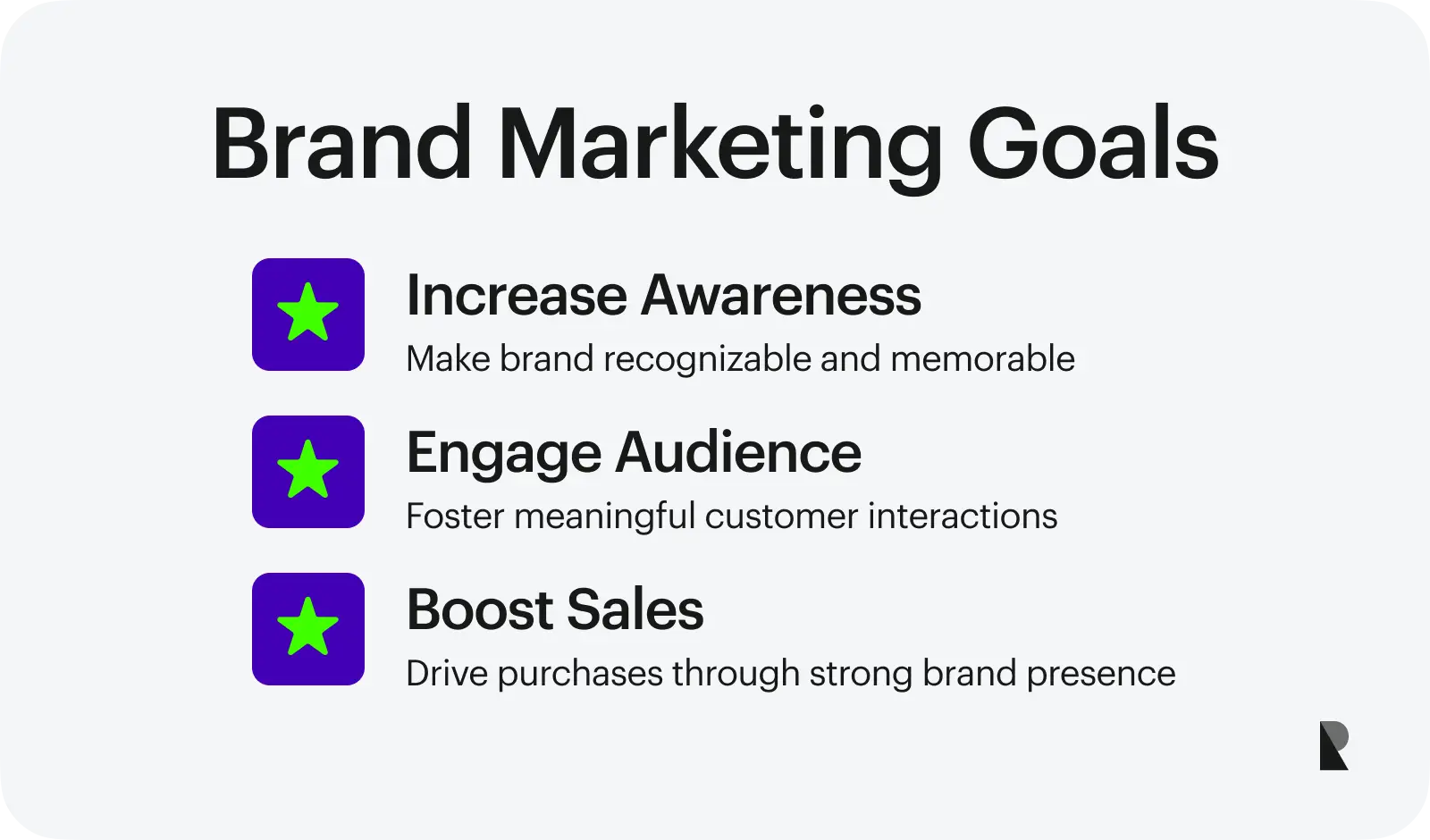
The goals for brand marketing can be many — and one thing they all seem to have in common is their aim to build lasting connections with the audience. So, as you’re trying to identify your own unique brand marketing goals, try keeping these key objectives in mind:
- Increasing awareness: Make your brand recognizable to your target audience so that it is consistently experienced and remembered. With time, this will lead to an increase in customer engagement and a more substantial market share.
- Audience engagement: Creating meaningful interactions with the people that matter most. Engaged customers are much more likely to become advocates of your brand, which leads to better retention rates.
- Boosting sales: A strong brand presence and trust can increase purchase decisions. Brands with high emotional engagement from users can also raise prices since people are willing to pay a premium for the community.
8 Steps to Develop a Brand Marketing Strategy
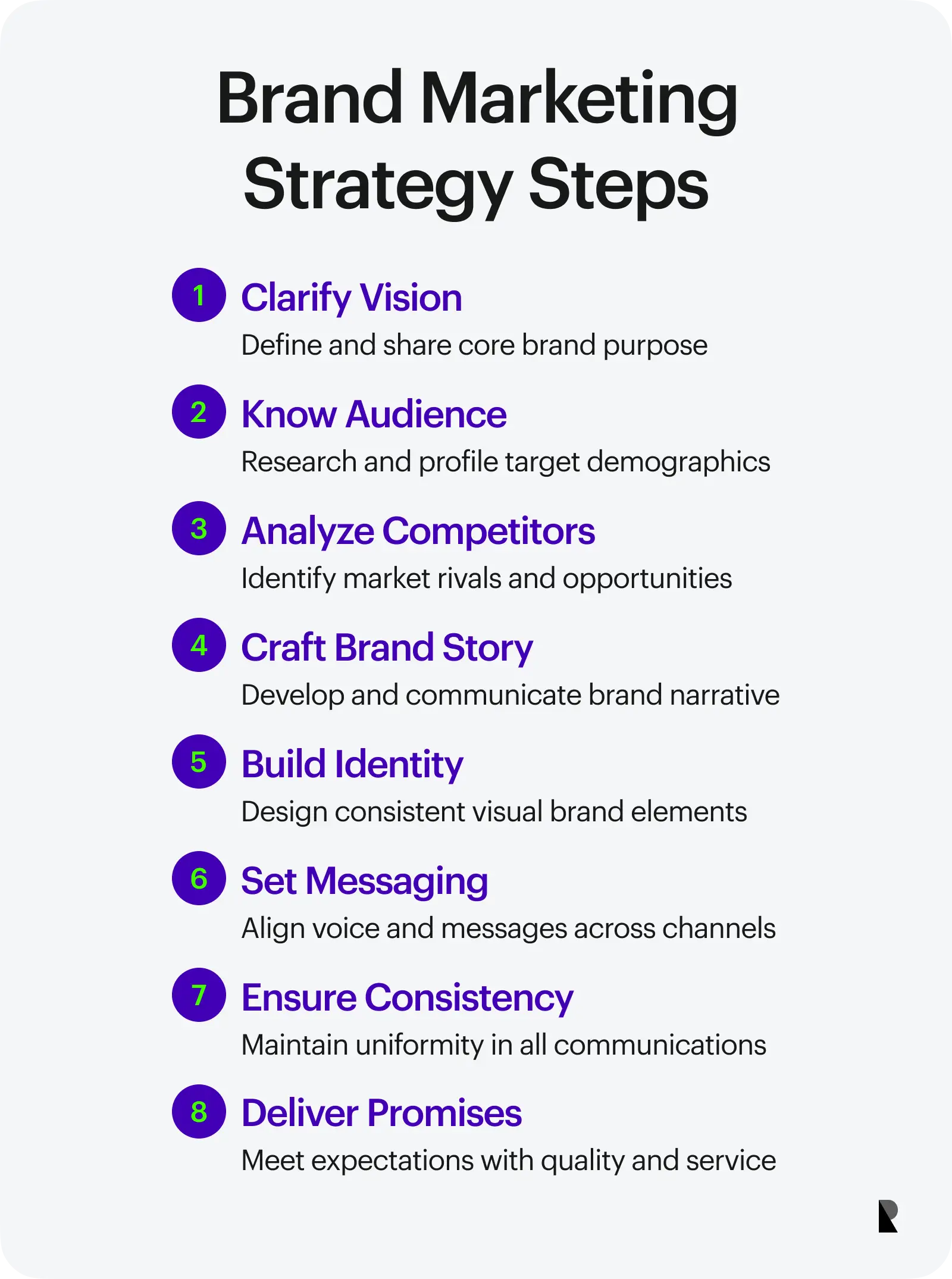
1. Know Your Vision
First things first: You must communicate your brand's vision, values, and objectives well. This creates the foundation of your brand and helps guide all marketing objectives. Having a clear vision makes it easier to align all aspects of your business and can even inspire employees and customers.
2. Identify Your Target Audience
You need to understand the characteristics and wishes of your target demographic. 71% of people expect companies to offer personalized experiences, so specifying your brand messaging and marketing strategies to relate to them matters. You can start by creating detailed buyer personas. This will help you better comprehend your audience's feelings and wishes so you can target them more effectively.
3. Recognize Your Competitors
Analyze your competitors often and well, and find out what makes your brand unique. You can differentiate your brand by offering something unique that appeals to your audience. These types of competitive analyses will help you better understand market trends and consumer expectations, and using tools like SWOT analysis (Strengths, Weaknesses, Opportunities, Threats) can be a great way to start assessing your competitive landscape.
4. Define and Market Your Story
Create a compelling brand narrative that resonates with your audience, and share it consistently across your marketing channels. A well-told brand story combined with a well-created tone of voice can increase the perceived value of your products and build deeper connections with your customers.
5. Create a Brand Identity
Develop (or update) consistent visual elements like logos, colors, and fonts — ensure these designs reflect your brand's personality and values. Consistent branding increases recognition and trust, so investing in professional design and branding services can help your brand identity become cohesive and visually appealing. Creating some brand guidelines is a great place to start.
6. Describe Your Messaging Strategy
Outline your communication tactics and channels and ensure that your brand's voice and message are the same everywhere. Clear and consistent messaging across social media, paid ads, and other marketing platforms allows for a stronger brand identity and ensures that your audience really gets your brand's value proposition.
7. Be Consistent
Uniformity in all brand communications is really important, as consistent messaging is the key to reinforcing your brand identity and building trust with your audience. Consistent branding elements, like colors and logos, are also crucial for brand recognition. Using a brand style guide can help you maintain consistency across your marketing materials, both for messaging and design.
8. Make Sure Products Live Up to their Promise
Fulfilling your promises is key to achieving trust and loyalty, so you must create products or services that align with your brand claims. In a world where 32% of all customers would stop supporting a brand they loved after only one bad experience, delivering on your promise, having high product quality, and excellent customer service are more or less expected.
What to Avoid in Brand Marketing?
Here are some common pitfalls in brand marketing:
- Inconsistency: If you fail to maintain a consistent brand message and identity, you’ll confuse customers and water down your brand's potential impact.
- Ignoring customer feedback: Not listening to feedback can alienate your audience and damage your brand; hearing them will improve products and services.
- Overpromising: If you’re making promises you can’t deliver on, it can lead to extreme customer disappointment and damage your brand reputation.
- Ignoring competition: Ironically, not monitoring competitors can make your brand less competitive. Staying up to date with your market helps you stay ahead.
- Lack of adaptability: You must adapt to market changes and trends to make your brand relevant. Staying agile is paramount for your long-term brand success.
Examples of Benchmark Brand Marketing
Apple
Apple's brand marketing strategy is centered around simplicity, innovation, and quality. It’s hard to argue against the fact that their consistent brand messaging and clean designs have created a loyal customer base, and an even stronger brand identity. Their ability to create unique and compelling brand experiences has set them apart from competitors for decades, and their focus on customer experience (while consistently producing high-quality products) has earned them a massive global following.
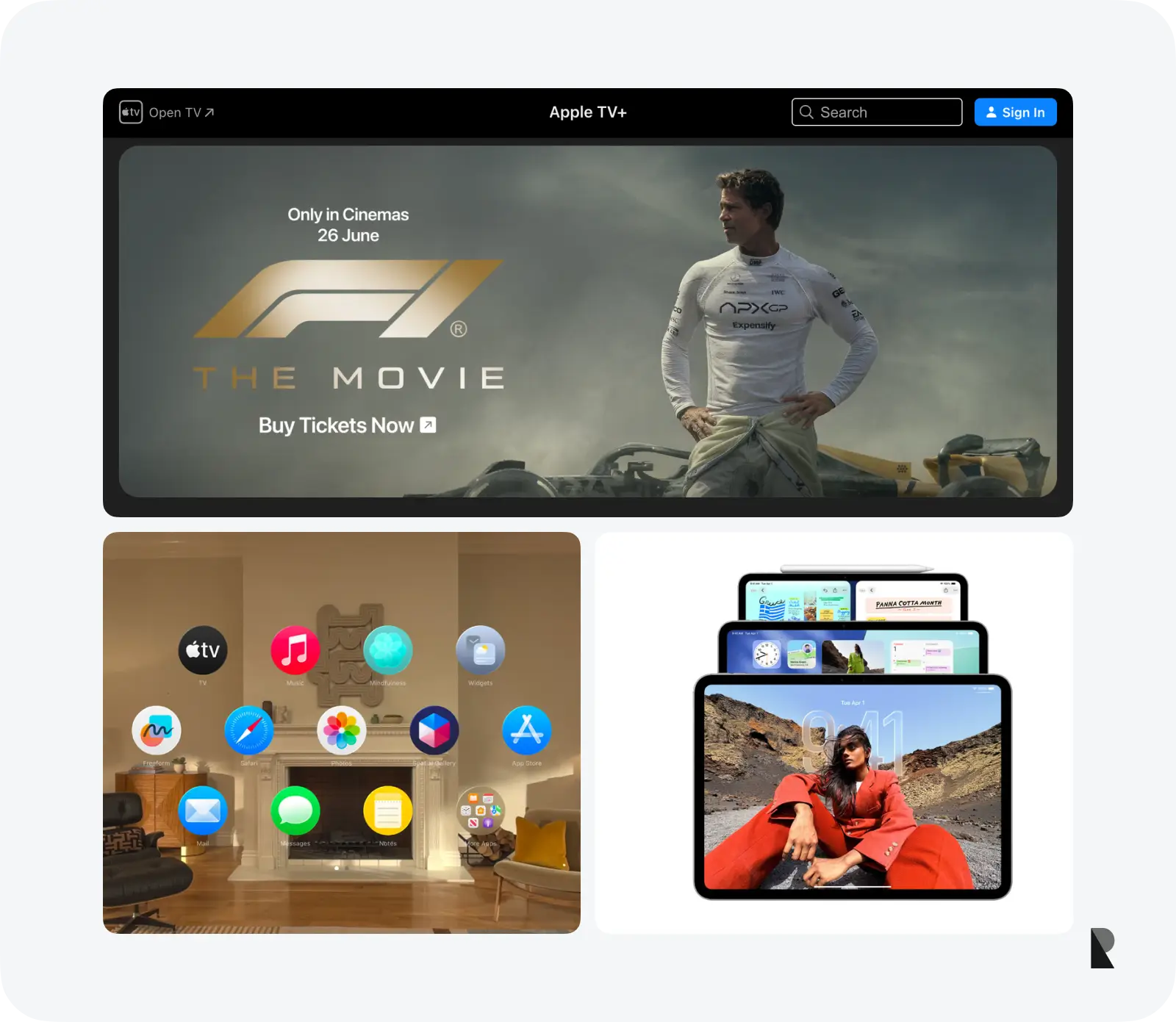
Brand fact: Apple is the world's most valuable brand, worth over $502 billion.
Red Bull
Red Bull is the uncrowned king of creating engaging and adventurous brand marketing campaigns. Their focus on extreme sports and high-intensity events works well with their brand message and target audience. Their content marketing strategy (including things like Red Bull Air Race and Red Bull Stratos), has positioned them as a leader in the energy drink market. The brand tagline "Red Bull gives you wings," which you’ve heard before, is also a perfect example of consistent and compelling brand messaging over time.

Brand fact: Red Bull sold over 12.1 billion cans in 2023.
McDonald's
McDonald's uses consistent branding, memorable jingles, and effective marketing campaigns to remain the unchallenged number one in global fast food. Their focus on family-friendly communications and convenience works well with a broad audience, and their branding strategy includes iconic things like the Golden Arches and the "I'm Lovin' It" slogan, which are nothing short of synonymous with the brand — a fantastic achievement.

Brand fact: McDonald's brand value is estimated at $223 billion.
Netflix
Netflix's brand marketing strategy focuses on personalized content and a seamless user experience. Its strong brand identity and consistent messaging across all platforms (as well as its pioneering role in video streaming) have made it a leader in the industry. Netflix's use of data-driven marketing to personalize recommendations and content has really contributed to its success, and its commitment to original content production, such as the hit shows "Stranger Things" and "The Crown," has further strengthened its brand.
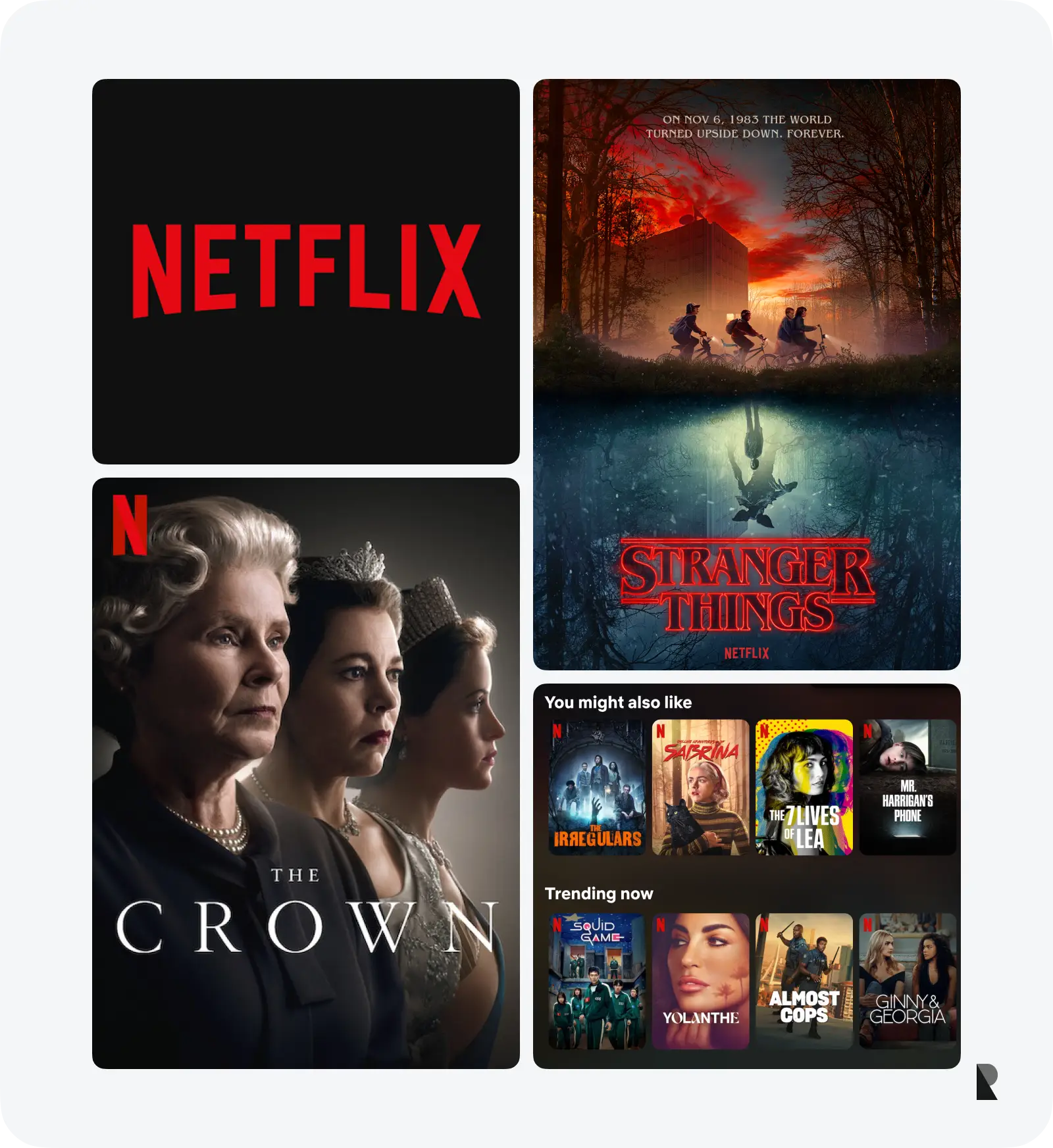
Brand fact: Netflix has over 269 million subscribers worldwide.
Nike
Nike's "Just Do It" campaign is a perfect example of effective brand marketing. They built a compelling brand with an inspirational message, a strong brand identity, and a big focus on athletic excellence. Their ability to connect with their audience through emotional storytelling and socially impactful advertising has set them apart from competitors. Their collaborations with top athletes and focus on innovation in their products have only reinforced their brand leadership—and they’re showing no signs of slowing down.

Brand fact: Nike's brand value is estimated at $30 billion.
Conclusion
Brand marketing is a significant part of building and maintaining a modern brand over time. Once you’ve understood the principles of branding and marketing individually and implemented your first (or improved) brand marketing strategy, you will start seeing the fruits of your labor: an increase in brand awareness, audience engagement, and sales.
Remember that consistency and authenticity are key to effective brand marketing. Ensuring that the entire company stands behind your message and understands/uses it will be the difference between success and failure.
Sep 18, 2024
